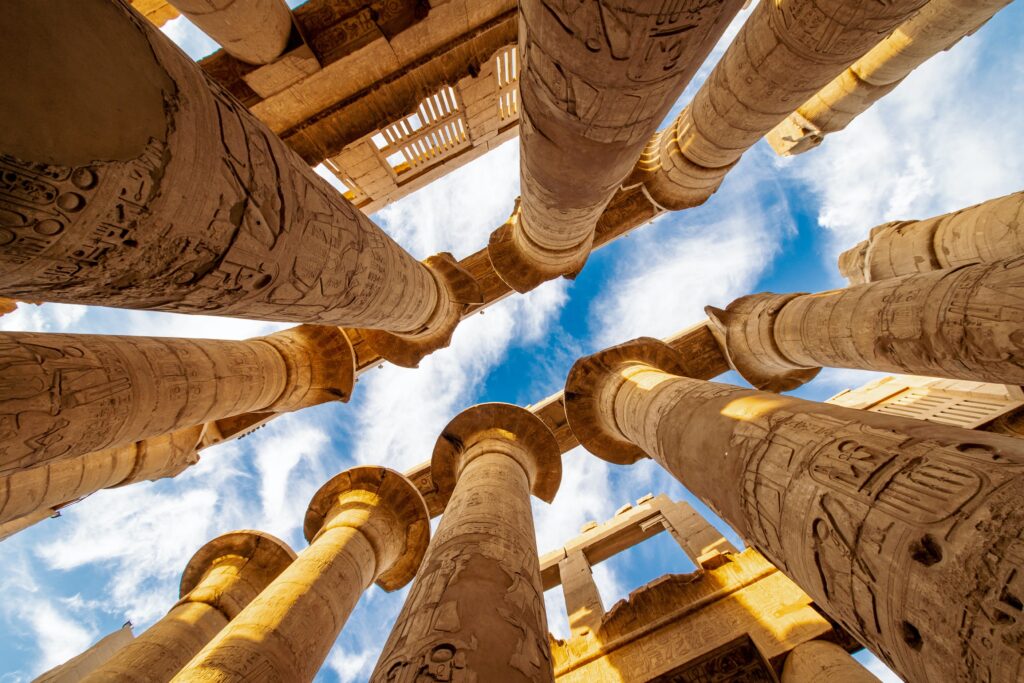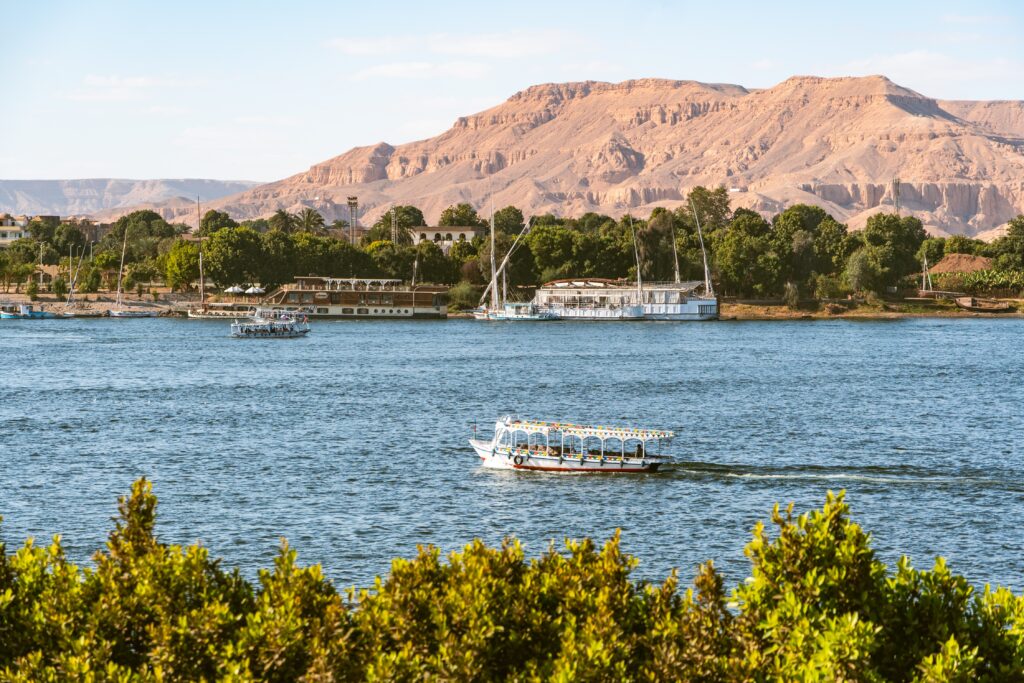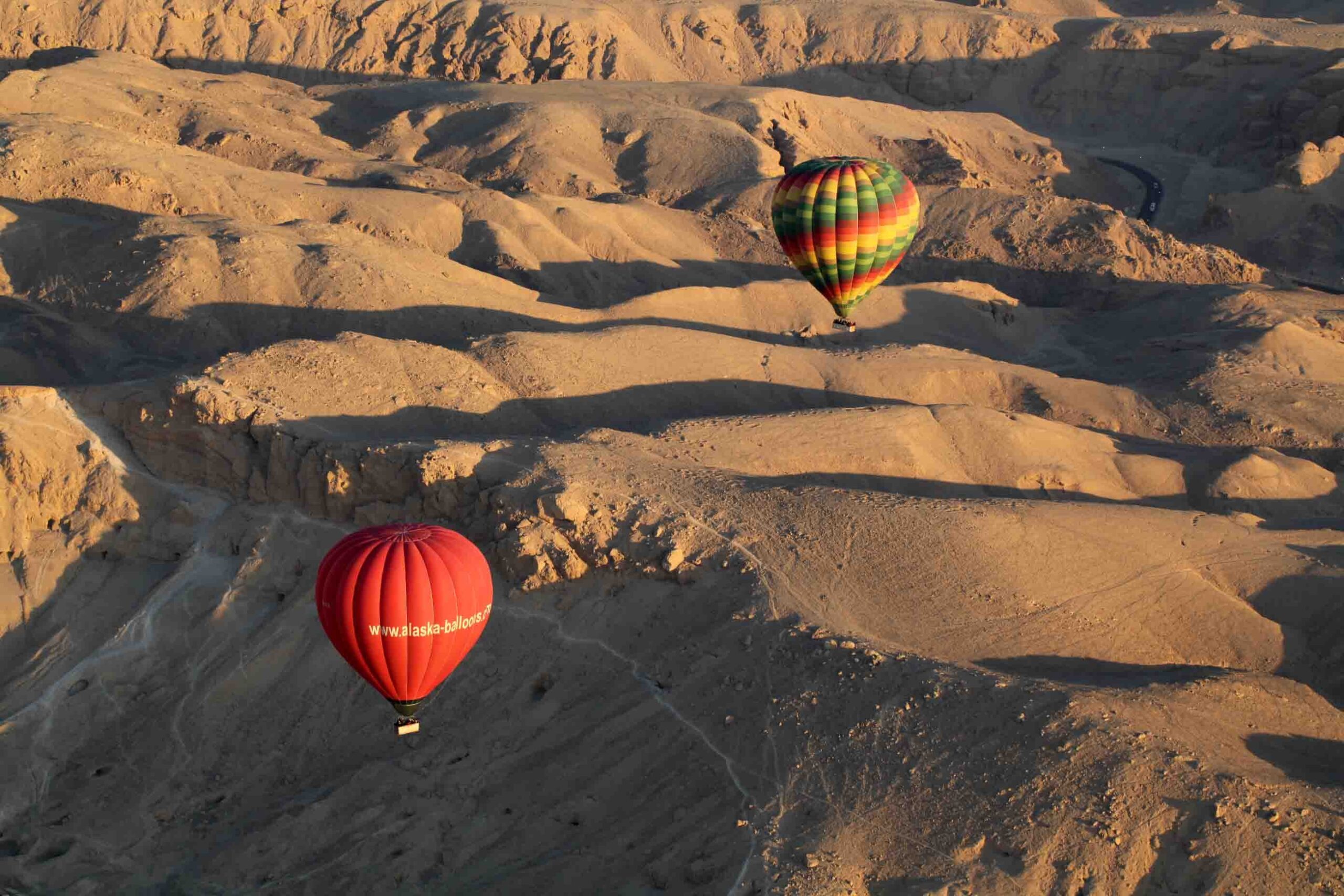Luxor
A Glorious Past: Luxor’s Ancient Heritage
In the days of ancient Egypt, this splendid city was known as ‘Thebes’ and held immense significance. Today, it’s affectionately referred to as the ‘World’s Greatest Open-Air Museum’. As you wander through its streets, you’ll find the remnants of the majestic Temples of Karnak and Luxor, which stand amidst the modern city on the East Bank. Here, life continues to unfold much as it has for centuries among the local community.

The Nile and Luxor’s Unique Position
Nestled between the flowing waters of the East and West Banks of the mighty River Nile, Luxor City invites both locals and visitors to traverse its waterways on charming Felucca boats and Ferries, bridging the gap between past and present. The West Bank boasts a treasure trove of monuments, tombs, and temples, including the revered Valley of the Kings and the Valley of the Queens. Year after year, millions of tourists embark on a pilgrimage to these hallowed grounds, immersing themselves in the wonders of ancient Egyptian civilization.
The Rise of Thebes:
Unraveling Luxor’s past unveils a tale of grandeur and significance. During the reign of the New Kingdom, Luxor, known as Thebes, reigned as Egypt’s capital, earning the illustrious title of the ‘Glorious City’ devoted to the god Amon-Ra. Through the pages of history, Luxor flourished into a thriving metropolis, renowned not only for its opulence and luxury but also as a haven of wisdom, art, religious devotion, and political influence. Over time, Luxor evolved into a global symbol of wealth and power, leaving an indelible mark on both Egypt and the world.

Worship and Transformation:
The heartbeat of Luxor pulsates with devotion to Amon and his divine family. Amon, along with his wife Mut and their son Khonsu, the God of the Moon, was fervently worshiped here. The rise of Luxor as a central hub in Egypt elevated Amon’s significance, leading to a merger with the sun God Ra, giving birth to the mighty ‘King of Gods,’ Amon-Ra. The grand temple of Amon-Ra at Karnak, situated north of Thebes, held its prestigious status as the pinnacle of Egyptian temples until the sands of time ceased its prominence.
The Avenue of Sphinx
A remarkable endeavor continues to unfold in Luxor – the resurrection of the original ‘Avenue of Sphinx.’ This project, set in motion in 2014, aims to revive the historic road that once connected Karnak and Luxor Temples. A thorough exploration of this avenue will soon allow tourists to tread in the footsteps of history, discovering the hidden stories of over a thousand Sphinx statues that adorned this ancient pathway. As the city progresses, remnants of churches, homes, and mosques come to light, sharing the tales of civilizations that once thrived here.
The Valley of the Kings
Transitioning to Luxor’s East Bank, we encounter the awe-inspiring expanse of the Valley of the Kings. This otherworldly landscape, characterized by its sweeping sand dunes juxtaposed against the Nile’s waters, conceals a trove of treasures that have remained veiled for centuries. The tombs of illustrious pharaohs such as Tutankhamun, Ramses I, Ramses II, Ramses III, and many more, adorn this valley. Their legacies, now exhibited in museums, whisper of an age when pharaohs sought to ensure their comfort in the afterlife by preserving their riches.

Exploring Valley of the Kings
The Valley of the Kings, a necropolis that spans from the 16th to the 11th centuries BC, holds a pivotal role in unraveling the tapestry of Pharaonic Egypt’s New Kingdom dynasties. This sanctuary, designated as a UNESCO World Heritage Site in 1979, reigns as a paramount archaeological treasure, luring inquisitive minds from around the globe. As you traverse the Nile, the villages of New and Old Gurna grace your journey, giving glimpses into the daily lives of generations past. The vibrantly painted mud houses of Old Gurna, now housing alabaster factories, stand as a testament to time’s passage.
East Bank Marvels:
A voyage through Luxor’s East Bank reveals a myriad of iconic landmarks. Luxor’s temple complex, standing proudly along the Nile, offers a mesmerizing sight, particularly when bathed in the soft glow of evening lights. Dating back to the eras of Amenhotep II and Ramses II, this sanctuary reverberates with the reverence of ancient worship. The Luxor Museum, a modern treasure trove, houses antiquities that recount Luxor’s past, while the corniche serves as a picturesque boulevard along the river, boasting the prestigious Winter Palace Hotel.
The Majestic Karnak Temples:
Venturing deeper, you’ll encounter the illustrious Karnak Temples – a trio of magnificent structures that are renowned across the globe. The Precinct of Amun-Re stands as the largest of them all, a haven dedicated to the deity Amon. These temples, bearing witness to centuries of additions by different pharaohs, create an unrivaled complex of columns, courtyards, and pylons. Each stone tells the story of the past, whispering of the devotion and grandeur that once filled these hallowed halls.
Luxor’s Living Narrative
As you step foot into Luxor, you’re not just entering a city; you’re embarking on a journey through time. Luxor’s embrace is warm and inviting, its streets a fusion of ancient and modern tales. The city, with its rich history and architectural marvels, stands as a living testament to the enduring legacy of the Egyptian civilization. With each step, you’ll find yourself immersed in a narrative that spans millennia, a narrative waiting to be discovered amidst the temples, tombs, and treasures that grace this magical land.
